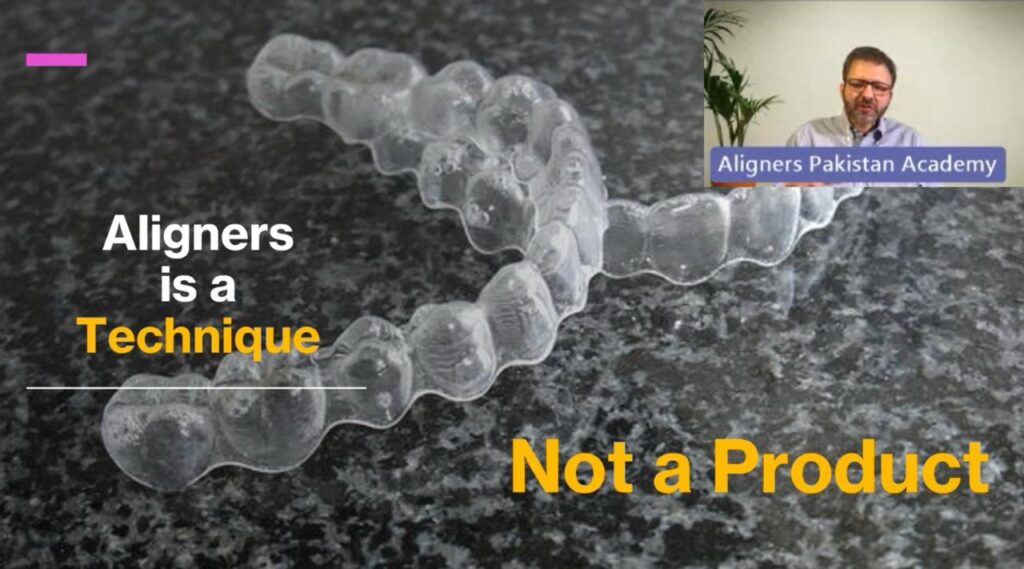
Karachi, Pakistan – Dr Awab Alvi at Aligners Pakistan Academy recently started a FREE Aligners Academy Fellowship for dentists in Pakistan, a six-month online course accredited by IADSR (Institute of Advanced Dental Science & Research) to issue continuing dental education credit hours. The first session was hosted on February 28th, followed by the second session on March 14th. Aligners Pakistan Academy received an overwhelming response with over 1,000 registrations, though only 300 participants could be accommodated, underscoring the growing interest in advanced clear aligner education. Following the success of the first session, the second webinar focused on two critical aspects of aligner therapy: understanding impression accuracy and the role of attachments in achieving predictable orthodontic tooth movement.
Aligners rely on carefully designed attachments bonded to teeth to optimize force application and control movement. Unlike traditional braces, which use brackets and wires to pull teeth into position, aligners apply pushing forces. Attachments act as strategic grip points, allowing the aligner to exert precise forces required for complex movements such as rotation, extrusion, and root control.
However, the success of these attachments hinges on precise treatment planning by the orthodontist. Simply relying on a technician without a thorough understanding of biomechanics can lead to ineffective or inefficient tooth movement. Dentists must take the lead, ensuring that each attachment is strategically designed and positioned to deliver the intended forces. The choreography of tooth movement depends on deliberate force application—every attachment, force vector, and aligner stage must be carefully planned to achieve predictable and optimal results.

Active Surfaces: These are the areas of the attachment that directly engage with the aligner, transmitting force to the tooth. Their shape and inclination determine the type and direction of movement, whether it’s

Passive Surfaces: These parts of the attachment do not engage with the aligner but help maintain fit and stability. While they do not exert direct force, they ensure the aligner stays seated correctly, improving treatment efficiency.
Understanding how these surfaces interact with aligners is essential for achieving precise, controlled, and predictable tooth movements—a key topic covered in detail during the webinar.
Beyond biomechanics, aligner success is heavily influenced by the accuracy of each step in the workflow—from impressions to 3D printing and thermoforming. Every stage introduces a potential source of error:
Aligners lose a portion of their active force within the first two hours of wear because they are made from plastic materials, which do not provide fully consistent forces like braces. In contrast, braces rely on wires actively engaged within brackets, maintaining continuous force application.
Each of these stages contributes to minor inaccuracies, which can accumulate and affect the final fit of the aligner. Proper quality control and precise treatment planning help minimize these errors and ensure optimal force delivery.
A Milestone in Aligner Education
Led by Dr. Awab Alvi, a pioneer in clear aligner therapy in Pakistan, this webinar series is designed to bridge the knowledge gap in aligner treatment planning. The course moves beyond product reliance – Aligners is Technique, Not a Product, empowering practitioners to take full control of their treatment planning, case selection, and biomechanics. Registration details can be accessed at aligners.pk/academy where we will consider new registrations for the next cohort of our 6-month online training
Join the revolution in aligner education and take your orthodontic practice to the next level with Aligners Pakistan!

aligners.pk/academy